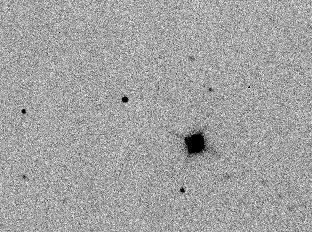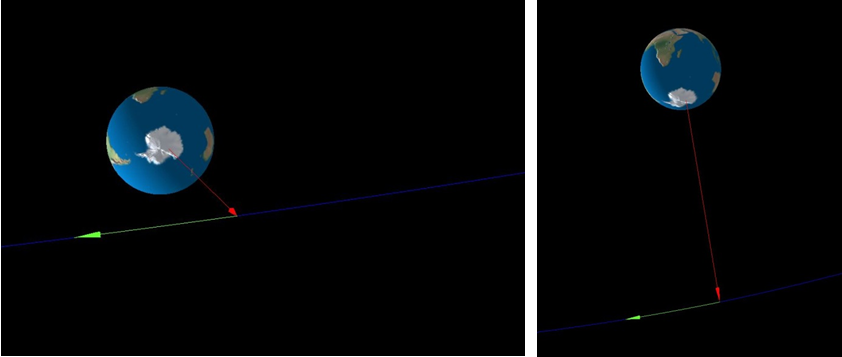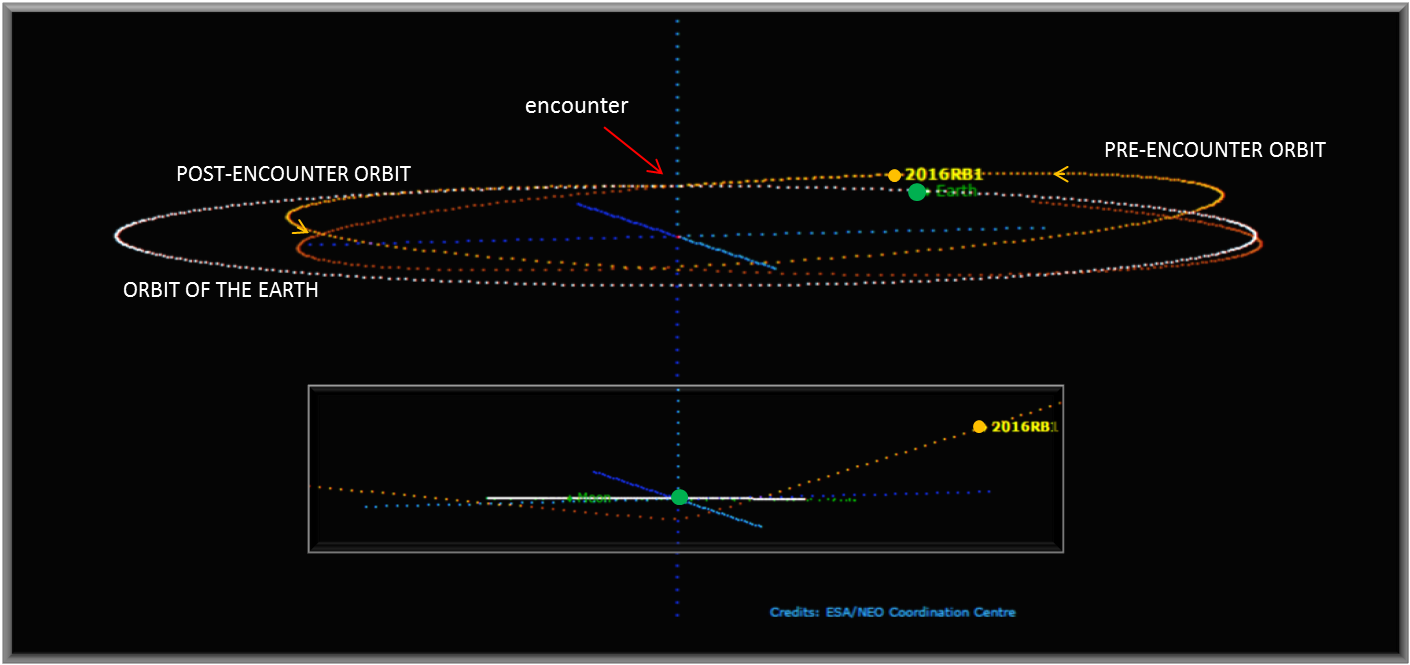Earlier today, ESA’s NEO (Near Earth Object) Coordination Centre, located at ESA/ESRIN, Italy, posted an interesting report on the close ‘graze-by’ this week of asteroid 2016 RB1.
The news reads in part:
Asteroid 2016 RB1 has hit the news because of a peculiar close passage on 7 September 2016 at 19:20 CEST. About the size of a cottage, the asteroid flew past our planet at an altitude of 34 000 km, roughly the same as the so-called ‘geostationary ring’, where most telecommunication satellites reside. Yet it posed no hazard either to our planet or to the satellite operators. Despite having been discovered only 24 hours before closest approach, the orbit became quickly so well constrained to ensure that the computation of the incoming flyby had the necessary accuracy to rule out any Earth impact solution.
Full news via the NEO-CC web pages.
The interesting back story comes from Ettore Perozzi, NEO-CC manager, who added:
There has recently been four NEOs [near Earth objects] making very close encounters with Earth: 2016 RB1, 2016 RR1 and 2016 RS1 are all 10-meter-size objects that flew past our planet in the first week of September, all within half the distance to the Moon. 2016 QA2 is somewhat larger (30 meter) and came as close as 0.2 lunar distances on 28 August 2016.
This ‘clustering’ shows that we are increasingly able to detect very small objects passing extremely close to our planet; the next for asteroid hunters is to spot them well in advance so as to increase the warning time: this is a major goal for the next generation of sky surveys.

ESA’s NEO-CC alerted the Agency’s network of collaborating telescopes to attempt follow-up observations, which were successfully carried out by the team led by Daniela Lazzaro using the OASI telescope located in Nova Itacuruba, Brazil. The excellent quality of the images obtained by Filipe Monteiro can be appreciated in this animation showing the motion of 2016 RB1 in the 7 September morning sky. Credit: OASI/Filipe Monteiro
Also, if you take a look at the animation created from the (excellent!) flyby images, you may note a second, smaller dot tracking along with the asteroid (to the right of the moving asteroid blob in the image).
This smaller moving point is actually a ‘hot pixel’ on the camera used by the observatory.
It appears to move together with asteroid 2016 RB1 because the telescope was following the motion of the asteroid across the sky. It’s easy to identify this as an artifact because it covers one single pixel, while for a real object (like the asteroid near the centre) the light is spread over more than one pixel, and they appear as round blobs.
Finally, for the asteroid-obsessed, science-loving, literary fans out there in our audience (and you know who you are!), the wording “the size of a cottage” is not really a new, ESA-invented unit of measurement. 🙂
The author of the text at the NEO Cord Centre who drafted the news is presently deeply involved in reading Sense and Sensibility by Jane Austen.
For more information on how ESA’s is supporting the international effort to find asteroids and NEOs, access ESA SSA-NEO.

Asteroid 2016 RB1 trajectory above the Antarctic Credit: ESA


Discussion: no comments